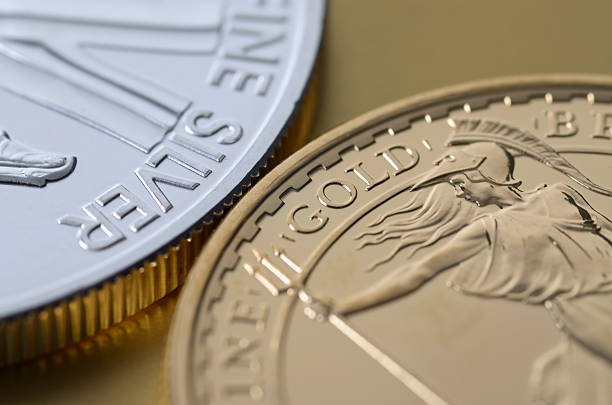Geopolitical tensions have long been a driving force in shaping global financial markets. Whether through political conflicts, military confrontations, or diplomatic standoffs, geopolitical unrest can cause significant volatility in financial markets, often leading to shifts in investor behavior. One of the key assets that tends to experience notable changes in value during periods of geopolitical tension is precious metals. Gold, silver, platinum, and palladium are often seen as safe havens during uncertain times, as their value tends to remain stable or even rise in the face of instability. This blog will explore how geopolitical tensions influence the prices and demand for precious metals and why they are considered a safe investment during times of global unrest.
Precious Metals as Safe Havens During Crisis
When geopolitical tensions escalate, investors typically seek to protect their assets from the potential risks associated with global instability. Precious metals have long been considered a reliable store of value in these uncertain times, making them a preferred asset for those looking to hedge against potential losses in other markets.
The concept of precious metals as safe havens is grounded in their historical ability to retain value over time. Unlike stocks or bonds, which can be highly volatile and subject to government policies or market fluctuations, precious metals are physical assets with intrinsic value. Gold, in particular, has maintained its role as a hedge against risk for centuries, with its value remaining relatively stable or increasing during periods of political unrest. Silver and other precious metals also tend to rise in value when tensions build, further reinforcing their status as a safe investment during crises.
Rising Gold Prices Amid Geopolitical Uncertainty
Gold is often the go-to precious metal for investors seeking security during times of geopolitical tension. Throughout history, gold has been a symbol of wealth, and it is one of the most reliable stores of value during times of crisis. When geopolitical conflicts or economic downturns arise, gold prices tend to rise as demand for it increases.
For example, during the Gulf War in the early 1990s and the global financial crisis of 2008, gold saw significant price increases as investors flocked to it as a safe store of wealth. Similarly, during the more recent tensions involving Russia and Ukraine, as well as the escalating U.S.-China trade disputes, gold prices have once again surged in response to fears over the potential economic and political fallout.
The appeal of gold during times of geopolitical unrest lies in its ability to retain value despite fluctuations in the global economy. Unlike currencies, which can be devalued or manipulated by central banks, gold cannot be easily affected by inflation or currency devaluation. This makes it an ideal investment for those looking to shield their wealth from the potential negative consequences of geopolitical instability.
Silver’s Role as a Hedge Against Uncertainty
While gold is the most popular choice for safe haven investments, silver also plays an important role in the precious metals market during times of geopolitical tension. Silver shares many of the same properties as gold, including its limited supply and intrinsic value, but it has additional industrial uses, which can affect its price during periods of geopolitical uncertainty.
Silver’s price tends to rise when there are fears about economic instability or global unrest, although it may not always experience the same level of increase as gold. However, silver is more affordable than gold, making it a more accessible option for smaller investors who want to protect their wealth without committing to large amounts of capital. Additionally, silver has industrial applications in electronics, solar panels, and medical devices, which means that supply and demand factors beyond geopolitical tensions can also influence its price.
In times of geopolitical tensions, when investors become risk-averse, silver’s value tends to increase alongside gold, as both are seen as tangible assets with limited supply. This makes silver an attractive option for diversifying an investment portfolio during times of uncertainty.
Palladium and Platinum’s Unique Responses to Geopolitical Events
In addition to gold and silver, other precious metals such as palladium and platinum can also experience fluctuations during periods of geopolitical tension. While these metals are not as widely recognized for their safe-haven status as gold and silver, they still play significant roles in global markets due to their industrial uses.
Palladium, for example, is a crucial component in the production of automotive catalytic converters, which help reduce vehicle emissions. As a result, its price can be heavily influenced by industrial demand, which can, in turn, be affected by geopolitical events. For instance, trade restrictions or sanctions can disrupt palladium supply chains, leading to increased prices as the metal becomes more difficult to obtain.
Platinum, while often used in similar applications to palladium, is also utilized in a wide range of industries, including jewelry and electronics. Like palladium, its price is influenced by both industrial demand and market sentiment. In the case of geopolitical tension, disruptions to global trade can cause platinum prices to rise as supply chains are affected.
Although these metals are less likely to experience the same sharp price increases as gold and silver during geopolitical crises, their value can still rise due to shifts in supply and demand driven by the uncertainty surrounding international events.
Geopolitical Tensions and Investor Behavior
The rise in precious metal prices during geopolitical crises is often tied to shifts in investor behavior. As geopolitical tensions increase, markets can become volatile, and investors may begin to seek safer assets to protect their portfolios. Precious metals, being tangible and historically reliable assets, are often the first choice for those looking to minimize risk.
This behavior is particularly evident during times of conflict or diplomatic standoffs. For example, during the Cold War, the threat of nuclear conflict led many investors to buy gold as a safeguard against potential global instability. In modern times, when geopolitical tensions flare up—such as during the Russian invasion of Ukraine or U.S.-China trade disputes—precious metals often see an influx of investment as investors look for stability.
The ability of precious metals to retain or increase in value during these times of fear and uncertainty has reinforced their reputation as a go-to investment during geopolitical crises. Whether it’s in response to military conflicts, diplomatic standoffs, or economic sanctions, precious metals have consistently acted as a financial safeguard for those looking to protect their wealth.
The Influence of Central Banks and Geopolitics on Precious Metals
Geopolitical tensions also influence central banks’ policies, which in turn affect precious metal prices. For example, during times of geopolitical instability, central banks may choose to increase their reserves of gold as a hedge against potential economic disruptions. This increased demand for gold can push prices higher, creating a ripple effect throughout the global market.
In addition, central banks may alter their interest rate policies in response to geopolitical tensions. Lower interest rates, for instance, can lead to a decrease in the appeal of other investment options, such as bonds or savings accounts, making precious metals a more attractive investment. Central banks around the world, particularly in emerging markets, have been known to accumulate large quantities of gold during times of geopolitical unrest, further driving up the demand for the precious metal.
Conclusion
Geopolitical tensions have a significant impact on the value of precious metals. Whether it’s the flight to safety during military conflicts, fears of economic disruption, or concerns about inflation and currency devaluation, precious metals like gold, silver, platinum, and palladium are often seen as safe haven assets—stable stores of value in times of uncertainty. The historical track record of these metals in preserving wealth, coupled with their limited supply and global demand, makes them a reliable investment during times of geopolitical tension.
As the world continues to face political instability and economic volatility, precious metals will likely remain a key asset for those seeking to protect their wealth from the unpredictable forces of geopolitics. By investing in precious metals, investors can secure a measure of stability and safeguard their portfolios against the risks posed by global unrest.



